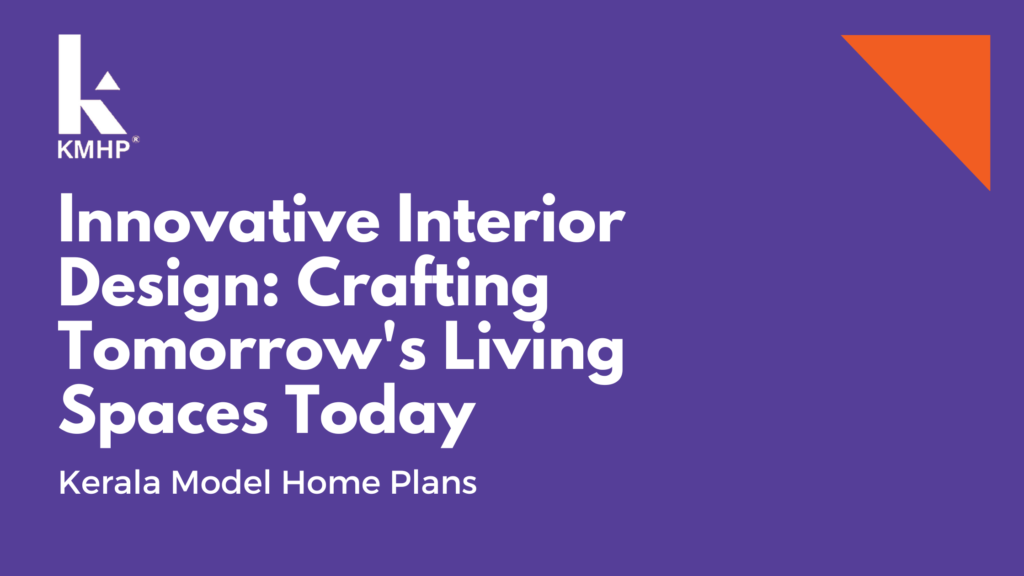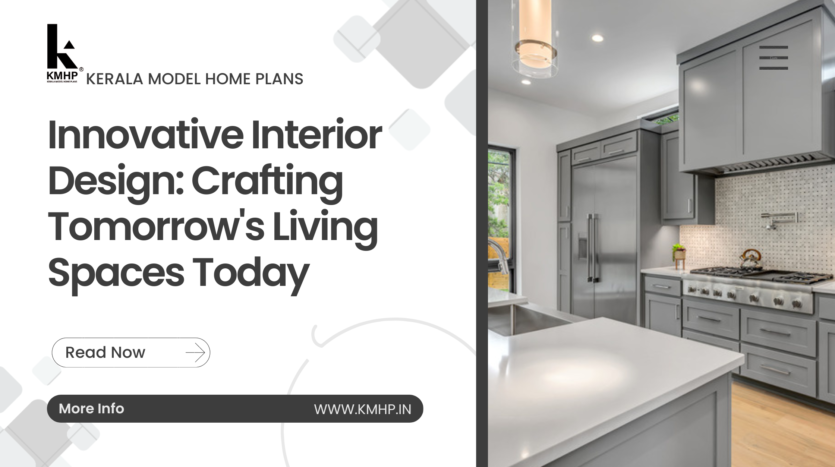Interior design is an ever-evolving discipline that constantly pushes the boundaries of creativity and functionality. In today’s fast-paced world, where technology advances at an astonishing rate and sustainability concerns are paramount, the field of interior design is undergoing a transformative shift. This article aims to explore the realm of innovative interior design, where designers are crafting tomorrow’s living spaces today. From incorporating cutting-edge technology and sustainable design principles to embracing minimalism and biophilic concepts, this article delves into the exciting possibilities that lie ahead. Join us on a journey to discover how interior design is being redefined to create living spaces that are not only visually stunning but also intelligently designed and environmentally conscious.

Incorporating Technology: Smart Homes and Intelligent Living Spaces
The Rise of Smart Homes
Welcome to the era of smart homes, where technology seamlessly integrates into our living spaces. Smart homes are no longer a futuristic concept, but a reality that is rapidly gaining popularity. From voice-activated assistants and automated lighting systems to smart appliances and integrated security features, technology is transforming our homes into intelligent living spaces that enhance our comfort, convenience, and security.
Innovative Technologies for Intelligent Living
The possibilities are endless when it comes to incorporating innovative technologies into our homes. Imagine controlling your entire home with a single app on your smartphone or using voice commands to adjust the temperature, play music, or even start your coffee machine. With the advent of smart thermostats, energy monitoring systems, and wireless charging stations, technology is revolutionizing the way we interact with our living spaces, making them more efficient, intuitive, and connected than ever before.
Sustainable Design: Environmentally Friendly and Energy Efficient Solutions
The Importance of Sustainable Interior Design
In today’s world, sustainability is no longer a buzzword; it’s a necessity. Sustainable interior design focuses on minimizing environmental impact while maximizing efficiency and functionality. From using eco-friendly materials and energy-efficient appliances to incorporating natural lighting and implementing water-saving solutions, sustainable design not only benefits the planet but also creates healthier living environments for us to enjoy.
Integrating Energy Efficient Systems
Energy efficiency is a key aspect of sustainable interior design. By integrating energy-efficient systems into our living spaces, we can reduce our carbon footprint and lower our energy bills. LED lighting, solar panels, and smart energy management systems are just a few examples of how interior designers are incorporating energy-efficient solutions to create greener and more cost-effective homes.
Maximizing Functionality: Multi-purpose Furniture and Creative Storage Solutions
Adaptable Furniture for Small Spaces
Living in smaller spaces doesn’t mean sacrificing functionality and style. Designers are increasingly focused on creating adaptable furniture that maximizes space usage and caters to the needs of urban dwellers. From modular sofas that transform into beds to collapsible tables and hidden storage compartments, these innovative solutions ensure that every square inch of your home serves a purpose without compromising on design.
Creative Storage Solutions for Clutter-free Living
Say goodbye to clutter and hello to creative storage solutions! As our living spaces shrink, the need for efficient storage becomes paramount. Designers are finding imaginative ways to incorporate storage into every nook and cranny of our homes. From built-in shelves and hidden cabinets to under-stair storage and wall-mounted organizers, these clever solutions help keep our homes organized and free from the chaos of clutter. With the combination of technology, sustainability, and functionality, tomorrow’s living spaces are set to be smarter, greener, and more adaptable than ever before. So, get ready to embrace the future of interior design and create a home that not only reflects your personality but also meets your evolving needs and aspirations.
Embracing Minimalism: Streamlined Aesthetics and Open Concepts
Minimalist Design Principles
When it comes to interior design, less can truly be more. Minimalism is all about stripping away the excess and focusing on simplicity, functionality, and clean lines. This design philosophy embraces a “less is more” approach, creating spaces that are free from clutter and distractions. In minimalist design, every element has a purpose and nothing is superfluous. The color palette tends to be neutral, with whites, grays, and earth tones dominating the scene. Furniture and decor are often sleek and understated, with a focus on quality over quantity. Minimalism is not just about aesthetics, but also about creating a sense of calm and tranquility. By eliminating unnecessary items and visual clutter, minimalist spaces promote a feeling of openness and serenity.
Creating Open and Airy Living Spaces
One of the key aspects of minimalist design is the concept of open and airy living spaces. This means breaking down barriers and creating a sense of flow between different areas in the home. Open floor plans have become increasingly popular, knocking down walls to combine kitchen, dining, and living areas into one cohesive space. This not only maximizes natural light and views but also encourages social interaction and a sense of togetherness. To enhance the feeling of openness, incorporate large windows that bring the outdoors in and use light-colored materials that reflect natural light. It’s all about creating a harmonious blend of functionality and aesthetic appeal, allowing your living space to feel welcoming, spacious, and uncluttered.
Biophilic Design: Bringing Nature Indoors for Health and Well-being
Benefits of Biophilic Design
Imagine being surrounded by lush greenery and the soothing sounds of nature, even when you’re indoors. That’s the idea behind biophilic design, which seeks to connect people with nature in the built environment. Studies have shown that exposure to nature has numerous benefits for our health and well-being. It can reduce stress, improve cognitive function, and increase productivity. By bringing nature indoors, biophilic design aims to create spaces that promote relaxation, creativity, and a sense of well-being.
Incorporating Natural Elements in Interior Spaces
Incorporating natural elements in interior spaces is key to biophilic design. This can include using materials like wood, stone, and bamboo, as well as incorporating plants, natural textures, and organic patterns. Green walls or vertical gardens are a popular way to introduce nature indoors, adding a vibrant splash of greenery to any room. Large windows and skylights can also maximize natural light and offer glimpses of the outside world. Biophilic design is not just about aesthetics; it’s about creating a connection with the natural world. So, go ahead and embrace your inner plant lover, and let nature be an integral part of your living space.
Personalization and Customization: Tailoring Spaces to Individual Preferences
Designing for Personal Expression
Gone are the days of cookie-cutter design. Today, interior design is all about personal expression and creating spaces that reflect the unique personality and taste of the inhabitants. Designing for personal expression means breaking free from rigid design rules and embracing your individuality. It’s about curating a space that tells your story, with elements that spark joy and resonate with your soul. Whether it’s displaying cherished mementos, showcasing artwork, or incorporating heirlooms, personalization is the name of the game.
Customizing Living Spaces for Unique Needs
Every individual and family has unique needs when it comes to their living spaces. Whether it’s accommodating specific lifestyle requirements or addressing physical limitations, customization is vital to creating a functional and comfortable home. Innovative interior design is all about finding creative solutions to make your space work for you. This can include installing adjustable fixtures, incorporating smart home technology, or utilizing storage solutions to maximize space. Don’t be afraid to think outside the box and adapt your living space to fit your needs. After all, your home should be a sanctuary that caters to your individual preferences and enhances your everyday life.
Innovative Materials and Finishes: Exploring Cutting-edge Design Elements
Introduction to Innovative Materials
When it comes to interior design, it’s not just about what you see, but also what you touch. Innovative materials and finishes can elevate the aesthetic appeal of any space, adding a touch of modernity and sophistication. From sustainable and recycled materials to high-tech fabrics and 3D-printed elements, the world of interior design is constantly evolving. These innovative materials offer new possibilities for creating unique textures, patterns, and visual effects that can transform any space into a work of art.
Incorporating Experimental Finishes in Interior Design
Experimenting with finishes is a great way to add personality and flair to your living spaces. From metallic finishes that add a touch of glamour, to concrete and raw textures that bring an industrial edge, the possibilities are endless. Whether it’s using textured wallpapers, incorporating iridescent tiles, or playing with holographic accents, don’t be afraid to mix and match different finishes to create a truly unique and dynamic space. Innovative materials and finishes allow you to push the boundaries of traditional design, adding an element of surprise and intrigue to your living spaces. So, go ahead and unleash your inner design maverick!Innovative interior design is paving the way for the future of living spaces, revolutionizing how we interact with our environments and enhancing our quality of life. As we embrace technology, sustainable practices, minimalism, biophilia, personalization, and groundbreaking materials, the possibilities for creating extraordinary interiors are endless. By continually pushing boundaries and thinking outside the box, interior designers are shaping a new era of living spaces that are both functional and aesthetically captivating. Let us embark on this exciting journey of interior design innovation and witness the transformation of our homes into havens of creativity, comfort, and inspiration.
- Eternal Charm: Timeless Elegance in Kerala Designs - April 25, 2024
- Sustainable Solutions: Building a Future with Flood-Resistant Structures - March 28, 2024
- Tiny Living, Big Dreams: Master Small Space Optimization Like a Pro - March 26, 2024


